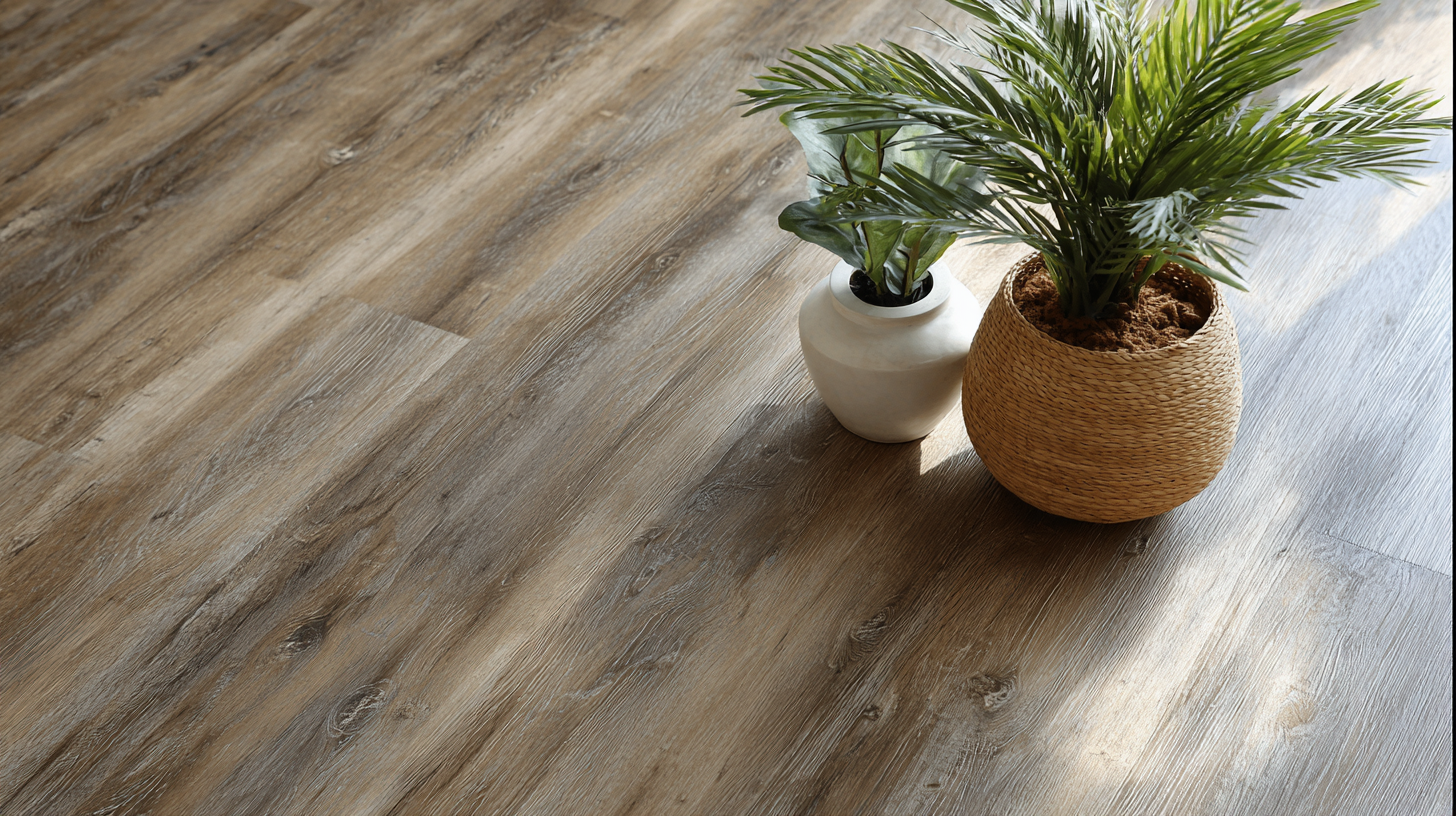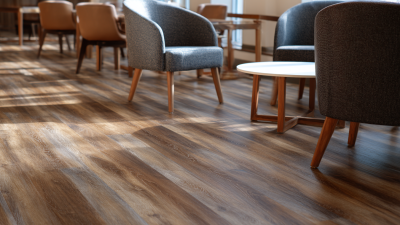When it comes to enhancing the aesthetic appeal and functionality of your home, choosing the right flooring is crucial. SPC Vinyl Flooring, or Stone Plastic Composite flooring, has gained immense popularity due to its durability, water-resistance, and easy maintenance. However, with a plethora of options available in the market, selecting the perfect type of SPC Vinyl Flooring that complements your home’s design and fulfills your practical needs can be a daunting task. In this guide, we will explore the various types of SPC Vinyl Flooring, providing industry insights that will help you make an informed decision. From understanding the different styles, thicknesses, and textures to considering factors like installation methods and room suitability, we aim to equip you with comprehensive knowledge to navigate your flooring choices effectively. Join us as we delve deeper into the essential aspects of SPC Vinyl Flooring to help you create a beautiful and functional space in your home.

 SPC (Stone Plastic Composite) vinyl flooring has gained significant traction in the home improvement industry due to its exceptional durability and versatility. According to industry reports, the SPC flooring market is expected to grow at a compound annual growth rate (CAGR) of 6.8% from 2021 to 2026, driven by the increasing demand for resilient and waterproof flooring options. One of the standout features of SPC flooring is its rigidity, making it less susceptible to scratches and dents compared to traditional vinyl. This resilience is complemented by a realistic appearance that mimics natural materials such as wood and stone, satisfying aesthetic preferences without the maintenance hassle.
SPC (Stone Plastic Composite) vinyl flooring has gained significant traction in the home improvement industry due to its exceptional durability and versatility. According to industry reports, the SPC flooring market is expected to grow at a compound annual growth rate (CAGR) of 6.8% from 2021 to 2026, driven by the increasing demand for resilient and waterproof flooring options. One of the standout features of SPC flooring is its rigidity, making it less susceptible to scratches and dents compared to traditional vinyl. This resilience is complemented by a realistic appearance that mimics natural materials such as wood and stone, satisfying aesthetic preferences without the maintenance hassle.
When selecting SPC vinyl flooring for your home, consider factors such as thickness and wear layer. Thicker planks typically offer better sound insulation and comfort underfoot, while a robust wear layer can enhance scratch resistance. Aiming for at least a 20-mil wear layer is advisable for high-traffic areas.
Tips: Always request samples before making a purchase to visualize how the flooring will look in your space. Also, consult with flooring professionals to understand the best installation methods, especially in moisture-prone areas. Remember that proper acclimation of the flooring prior to installation can prevent expansion or contraction issues in the future.
When selecting SPC vinyl flooring, your home’s style plays a crucial role in determining the right design and color. Begin by evaluating the overall aesthetic of your living spaces. For contemporary homes, sleek and minimalist designs with neutral colors may resonate well, creating a seamless look that complements modern furniture and decor. If your style leans towards rustic or farmhouse, consider flooring options with warm, earthy tones and textured finishes that mimic natural wood. These designs not only enhance the authenticity of the style but also add a welcoming touch to your home.
Color choice is equally significant, as it influences the ambiance of your space. Lighter shades can make a room feel more spacious and airier, perfect for smaller areas or those seeking a fresh look. On the other hand, darker tones can provide a sense of elegance and intimacy, making them suitable for larger rooms or spaces meant for relaxation. Additionally, consider how the flooring color interacts with your existing furnishings and wall colors. A cohesive palette will unify the elements of your home, ensuring that your SPC vinyl flooring enhances rather than clashes with your overall interior design.
When selecting SPC vinyl flooring for your home, evaluating durability and performance is crucial to making an informed choice. According to a 2023 industry report by the Resilient Floor Covering Institute, SPC (Stone Plastic Composite) flooring typically boasts a high level of durability, with a density that often exceeds 2,000 kg/m³. This density enhances resistance to impacts, scratches, and stains, making it ideal for high-traffic areas in a home. Furthermore, SPC flooring is often constructed with a rigid core, providing stability and preventing warping due to moisture, which is a significant advantage in kitchens and bathrooms.
Performance metrics such as wear layer thickness significantly affect the longevity of SPC vinyl flooring. Industry standards suggest that a wear layer thickness of at least 20 mils (0.5 mm) is optimal for residential use, providing adequate resistance against wear over time. A recent survey revealed that most homeowners prioritize easy maintenance, which SPC flooring delivers thanks to its water-resistant properties and ease of cleaning. By understanding these performance indicators, homeowners can better assess their options and choose SPC flooring that not only meets aesthetic preferences but also stands the test of time.
| Feature | Description | Evaluation Criteria |
|---|---|---|
| Thickness | SPC vinyl flooring typically ranges from 4mm to 8mm in thickness. | Choose thickness based on foot traffic and subfloor conditions; thicker planks generally provide better durability. |
| Wear Layer | The wear layer protects against scratches and dents. | Look for wear layers of at least 20 mil for residential use and 30 mil for commercial applications. |
| Water Resistance | SPC flooring is known for its water-resistant properties since it does not swell like wood. | Ensure the product is certified as waterproof for areas prone to moisture, like kitchens and bathrooms. |
| Stability | SPC contains a limestone core that enhances stability and prevents expansion or contraction. | Check for resistance to temperature changes, especially in rooms with large windows or direct sunlight. |
| Sound Absorption | Some SPC vinyl flooring comes with added sound-absorbing underlayment. | Consider products with foam backing for reduced noise, especially in multi-story homes. |
| Design Variety | SPC vinyl flooring is available in various styles, colors, and textures. | Look for options that closely mimic the look of natural wood or stone for aesthetic appeal. |
When considering SPC vinyl flooring installation, a significant factor to weigh is whether to undertake the project as a DIY endeavor or to hire professional installers. According to recent industry insights, homeowners opting for professional help often benefit from the expertise that can ensure proper subfloor preparation and seamless installation. Professional installation typically reduces the risk of misalignment and enhances the longevity of the flooring, which is crucial given that SPC vinyl is known for its
durability and moisture resistance.
On the other hand, DIY installation can be a viable option for those who are handy and motivated by cost-saving measures. Data shows that a growing number of homeowners are embracing DIY projects across various home improvement sectors, including flooring. However, it is important to recognize the potential challenges involved in DIY installation. If not executed correctly, issues such as inadequate adhesive application or improper cutting can lead to costly mistakes. Ultimately, choosing between DIY and professional installation requires evaluating your skill level, available time, and willingness to tackle the complexities of the flooring process.
When choosing SPC vinyl flooring for your home, budgeting wisely is essential to ensure you get the best value for your investment. The cost of SPC flooring can vary significantly based on factors such as thickness, design, and brand. Conducting a thorough cost analysis involves comparing different options within your budget while also assessing their durability and aesthetic appeal. This careful evaluation can help you avoid overspending while still achieving a stylish and functional flooring solution.
Moreover, it's crucial to maintain a strategic outlook during the selection process. Just as industry leaders are increasingly focused on optimizing their technology budgets without sacrificing innovation, homeowners should prioritize flooring options that offer the best balance of quality and cost-effectiveness. Exploring a range of choices allows you to identify products that meet your financial constraints while still providing the innovative designs and features that enhance your home's overall environment.







